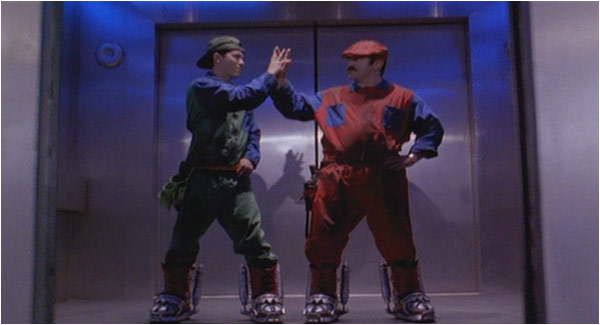In a recent article, I went through some of the ways that comic book films have evolved from a cringe-worthy medium into the Hollywood blockbusters of today. As I described, comic books have come a long way from the 1970’s Captain America to The Avengers and The Dark Knight Rises. But another realm of intellectual properties has not seen the same Geek Renaissance that comic films have seen. I’m talking, of course, about the dreaded Video Game Movie. Overall, video game franchises that have been translated into films have fallen far short of bringing their rich universes to life, making many beg the question—is it even possible to make a great video game film?
Much like the contention about comic book films, video game worlds are huge, complex places full of plots that can go on forever. Some are convoluted. Some are downright silly. But fans of these games will come to the theater to see their favorite RPG or first person shooter world translated onto the screen, and it is the job of the filmmaker to deliver something that resembles that video game. Let’s look over some of what’s come before, the good, the bad and the ugly, and discuss just what it is filmmakers can do to make sure that the next video game franchise doesn’t go the way of every Uwe Boll disaster.
1.) Translate For Realism, Keep the Authenticity
Compared to comic books, video game worlds can be downright silly. I mean, one of the most popular video game franchises of all time is about a vaguely racially stereotyped plumber racing round to rescue a blond-haired princess from a giant spikey turtle/lizard while chowing on some questionable mushrooms. Let’s just accept, sometimes stuff is a little out there in the digital video game world. So when translating for film, unless a film is being done in cartoon/animated format, the name of the game is realism while protecting the authenticity of the original game. This is a delicate, difficult balance to dance considering that at the heart of tons of games are implausible, weird and far, far out there concepts. Some game movies try to go for that authenticity and fail hard. Some just don’t seem to aim for it at all.
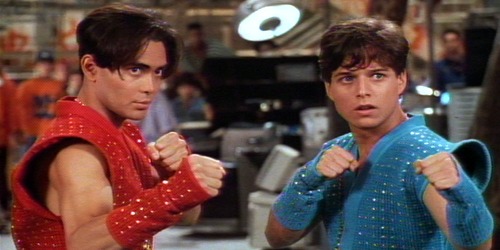 Take the Super Mario Bros. movie starring John Leguizamo and Bob Hoskins and the D-Movie special, Double Dragon. Both of these games have huge backstories and huge fan followings. Yet when it came time to translate these franchises to film, both went for tongue in cheek and never looked back. They didn’t even really bother to go for serious—after all, making “plumbers to the rescue” realistic wasn’t going to happen. But in going for funny, the films both phone in things like a good plot, acting and any kind of plausibility which take the films directly to the Bargain DVD bin. And while they might insight some warmth in a die-hard Double Dragon fan’s heart, nobody is going to be calling them good cinema because the movies couldn’t be bothered taking themselves even a little seriously.
Take the Super Mario Bros. movie starring John Leguizamo and Bob Hoskins and the D-Movie special, Double Dragon. Both of these games have huge backstories and huge fan followings. Yet when it came time to translate these franchises to film, both went for tongue in cheek and never looked back. They didn’t even really bother to go for serious—after all, making “plumbers to the rescue” realistic wasn’t going to happen. But in going for funny, the films both phone in things like a good plot, acting and any kind of plausibility which take the films directly to the Bargain DVD bin. And while they might insight some warmth in a die-hard Double Dragon fan’s heart, nobody is going to be calling them good cinema because the movies couldn’t be bothered taking themselves even a little seriously.
Tip #1: Difficulty in realism doesn’t give you an excuse to phone it in, or rely on comedy as a crutch.
2.) Everyone Likes a Plot, Right Guys?
Lots of video games don’t have plots. We know this. Fighting games have the barest flimsy excuses for universes set up, just to put a bunch of awesome characters with kick-ass fighting maneuvers together for you to battle with your buddies. This is accepted by fans. Yet when trying to turn those franchises into a film, it’s important to remember that while fighting games don’t have to have plots, movies do! And once again, just because the framework isn’t that strong in the game doesn’t give a filmmaker the excuse to present moviegoers with a flimsy plot. Action films have enough excuses for big and awesome fight scenes, but fans are not stupid. They know the difference between a plot that is healthy and has depth and one that is cobbled together to give the actors a chance to beat up on each other for our amusement.
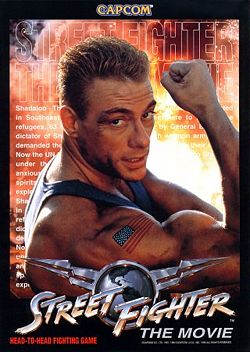 The worst offenders of this are the cringe-worthy Jean-Claude Van Damme Street Fighter outing back in 1994 and the more recent Tekken and King of Fighters films. (I’m purposefully skipping the 2009 Street Fighter: Legend of Chun-Li because it’s so awful it barely deserves being called a film so much as a coordinated disaster). All of these movies scrimp on even exploring much of the basic plot of the worlds, change what they need of established game canon whenever they want, and then fill their scripts with horrible dialogue and bad plot justification. What comes out is a mess that nobody wants to watch because, well, you can get the same pummeling with a cobbled-together storyline from watching pro wrestling on TV. And that doesn’t cost you a trip to the theater.
The worst offenders of this are the cringe-worthy Jean-Claude Van Damme Street Fighter outing back in 1994 and the more recent Tekken and King of Fighters films. (I’m purposefully skipping the 2009 Street Fighter: Legend of Chun-Li because it’s so awful it barely deserves being called a film so much as a coordinated disaster). All of these movies scrimp on even exploring much of the basic plot of the worlds, change what they need of established game canon whenever they want, and then fill their scripts with horrible dialogue and bad plot justification. What comes out is a mess that nobody wants to watch because, well, you can get the same pummeling with a cobbled-together storyline from watching pro wrestling on TV. And that doesn’t cost you a trip to the theater.
Tip #2: Just because a game doesn’t give you much to work with doesn’t mean you can ignore key things like plot on screen. Fans will notice.
3.) The Job’s Hard Enough – Don’t Shortcut
Video game franchises are huge. There’s no way to say that one could encompass the whole of the World of Warcraft universe into one prospective two hour and change film, or do justice to the whole Mass Effect storyline in a single outing. There’s just too much material. Equally, it would be foolish for a screenwriter to try and tackle multiple games in one movie script. Yet these are things done all the time in video game movies, all in the name of streamlining the universe for a single film outing. What ends up happening is a single movie will encompass the storyline of a main film and its sequels and end up diluting the entire affair. Symbolism and storytelling are lost in the rush to get in all the cool things from all across the game world.
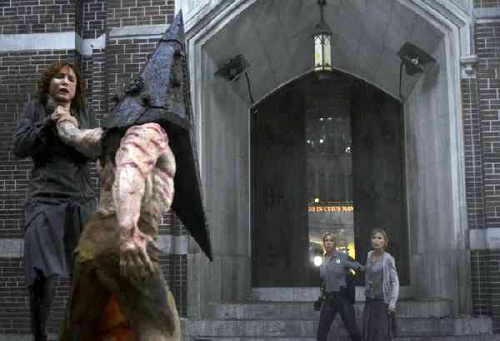
The worst offender of this is the Silent Hill film. Now while I will digress and admit that I think that Silent Hill was perhaps one of the best made video game films in years, it suffered from the problem of trying to cram too much into one film. Silent Hill as a game setting is a nuanced, psychologically deep and complex setting. Each villain you face represents something to the story and is meant to do more than just scare the pants off of you. Yet when utilized in the film, a terrifying villain like Pyramid Head loses all his true horror because the context for his story is gone.
Tip #3: You can’t get it all into one film and still provide the audience with satisfying character depth and integrity to the intellectual property.
4.) Gamers Are Hardcore – Respect Their Fandoms
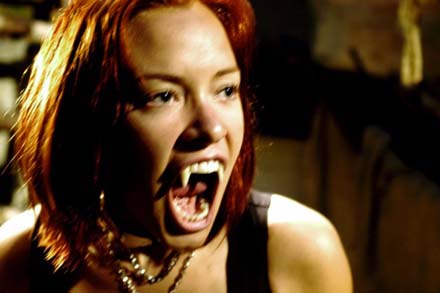 This is a song I sang for the comic book films as well, but it bears repeating. Gamers, like other fans, are devoted to the integrity of the characters they’ve embraced. When they go to see a video game movie that’s billed as Bloodrayne, they want to see a main character that resembles the heroine they enjoy. They do not want to see someone slap on the red wig and prance around doing a poor job of it. Characterization is just as important in a video game film as it is in any other movie and without it, the movie is doomed. Equally, respecting the fandom’s universe and the themes and feel will keep fans from booing down the film and provide a faithful adaptation. If you’re thinking, for example, of translating Doom and you decide to take out all the demons on the far-flung planet, well you’re doing yourself and the fandom a disservice. And your movie is going to flop, even if you have The Rock in it.
This is a song I sang for the comic book films as well, but it bears repeating. Gamers, like other fans, are devoted to the integrity of the characters they’ve embraced. When they go to see a video game movie that’s billed as Bloodrayne, they want to see a main character that resembles the heroine they enjoy. They do not want to see someone slap on the red wig and prance around doing a poor job of it. Characterization is just as important in a video game film as it is in any other movie and without it, the movie is doomed. Equally, respecting the fandom’s universe and the themes and feel will keep fans from booing down the film and provide a faithful adaptation. If you’re thinking, for example, of translating Doom and you decide to take out all the demons on the far-flung planet, well you’re doing yourself and the fandom a disservice. And your movie is going to flop, even if you have The Rock in it.
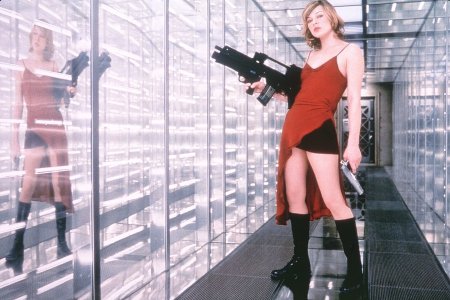
A typical example of this is the Resident Evil franchise. Granted, it started out well as the first film is an honest effort at adaptation. You’ve got the house, you’ve got the zombies, you’ve got a lot of the iconic monsters and images that make the first game complete. Also you’ve got the feel of isolation, the tension between civilians and Umbrella—all the elements are here to start off a film franchise correctly. And then, things go off the rails in Resident Evil: Apocalypse. The characters go and stay stale and two-dimensional and the story of escaping from Raccoon City is turned into little more than a backdrop for putting Milla Jovovitch through some intense calisthenics. Every other film after that is an example of a franchise gone far afield of where its source material began while still paying it lip service.
Tip #4: People are showing up to see the characters and events of their gamer fandom on the screen, so don’t play a bait and switch. Do the original material service.
So What Comes Now?
Now, good friends, we wait and see. There are so many good video games out there that still haven’t had a film, and whose names have been whispered in the hallowed halls of Hollywood for adaptation. Everyone’s heard the possibility of a Halo film, or a Metroid film bandied around, and who hasn’t wished for Link and The Legend of Zelda to hit big screens? But as much as we’d like to see Ferelden from Dragon Age or the Mass Effect universe translated to film, the cost and the sheer difficulty of translating these franchises to film have kept the projects in the realm of expensive pipe dreams. Yet should filmmakers see the wisdom in staying true to the fandoms and producing scripts dedicated to preserving the heart of their source material, we may yet be able to visit Dead Island or Dead Space or even that Ayn Randian metropolis under the waves of Bioshock. Just be true to your material and the fans will respect you.
Oh yes, and never let it go near Uwe Boll. Then the film might have a chance.
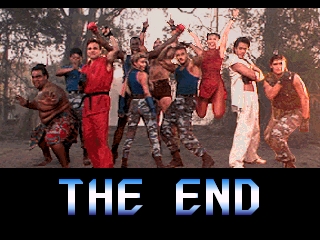
Shoshana Kessock is a comics fan, photographer, game developer, LARPer and all around geek girl. She’s the creator of Phoenix Outlaw Productions and ReImaginedReality.com










